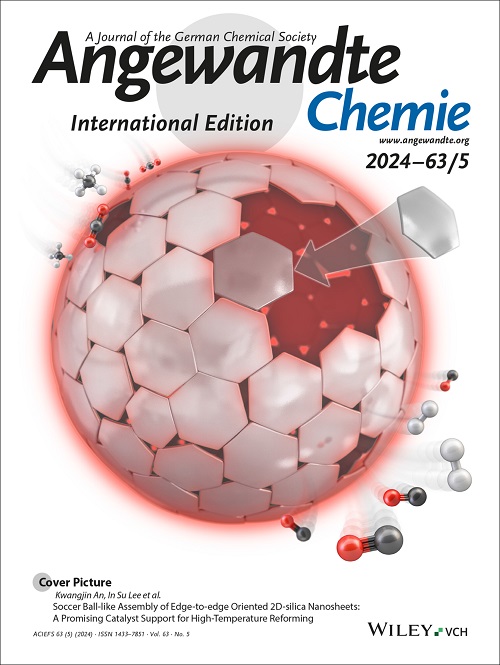Platinum-Catalysed Hydrofluorination of Alkynes at Room Temperature Promoted by a Fluoride Shuttle.
IF 16.9
1区 化学
Q1 CHEMISTRY, MULTIDISCIPLINARY
引用次数: 0
Abstract
Hydrofluorination of alkynes provides a synthetic route to access fluoroalkenes, a class of compounds with wide applications in chemical research. Herewith, we describe an exceptional hydrofluorination process of alkynes catalysed by Pt(II) complexes at room temperature. Various Pt(II) dichloride complexes bearing chelating phosphines were synthesised and studied towards their catalytic behaviour. Mechanistic investigations suggest the involvement of a dicationic Pt(II) bis(alkyne) species as well as a cationic ß-fluorovinyl Pt(II) complex in the catalytic cycle. Remarkably, the hydrofluorination is enabled by fluorinated anions. The corresponding acids BF3, HF as well as PF5 act as fluoride shuttles to allow for an outer-sphere fluorination of the metal-bound substrate. Detailed DFT analyses for BF3 show that the hydrofluorination is mediated by complexes between the fluorinated anion and HF. This lowers the hydrofluorination barriers sufficiently to outcompete the simultaneously occurring, more exergonic cyclisation of two coordinated alkynes to a structurally characterised cycloallyl complex. The catalytic system can be applied to a wide substrate scope to generate fluoroalkenes bearing bulky alkyl, aryl and electron withdrawing groups, such as ester and carbonyl substituents.室温下铂催化炔的氟化反应。
氟化烃是一类在化学研究中有广泛应用的化合物,它的氢氟化反应为获得氟烯烃提供了一条合成途径。在此,我们描述了一种在室温下由Pt(II)配合物催化的特殊炔氢氟化过程。合成了多种含螯合膦的二氯化铂配合物,并对其催化性能进行了研究。机理研究表明,在催化循环中涉及到一个阳离子型的Pt(II)双炔类和一个阳离子型的ß-氟乙烯基Pt(II)配合物。值得注意的是,氢氟化是由氟化阴离子实现的。相应的酸BF3、HF和PF5充当氟化物穿梭体,使金属结合的底物发生外球氟化。对BF3的详细DFT分析表明,氟化阴离子与HF之间的配合物介导了氢氟化反应。这降低了氢氟化障碍,足以与同时发生的两个配位炔的更高效的环化形成具有结构特征的环烯基络合物。该催化体系可应用于广泛的底物范围,以生成含有大量烷基、芳基和吸电子基团的氟烯烃,如酯基和羰基取代基。
本文章由计算机程序翻译,如有差异,请以英文原文为准。
求助全文
约1分钟内获得全文
求助全文
来源期刊
CiteScore
26.60
自引率
6.60%
发文量
3549
审稿时长
1.5 months
期刊介绍:
Angewandte Chemie, a journal of the German Chemical Society (GDCh), maintains a leading position among scholarly journals in general chemistry with an impressive Impact Factor of 16.6 (2022 Journal Citation Reports, Clarivate, 2023). Published weekly in a reader-friendly format, it features new articles almost every day. Established in 1887, Angewandte Chemie is a prominent chemistry journal, offering a dynamic blend of Review-type articles, Highlights, Communications, and Research Articles on a weekly basis, making it unique in the field.

 求助内容:
求助内容: 应助结果提醒方式:
应助结果提醒方式:


